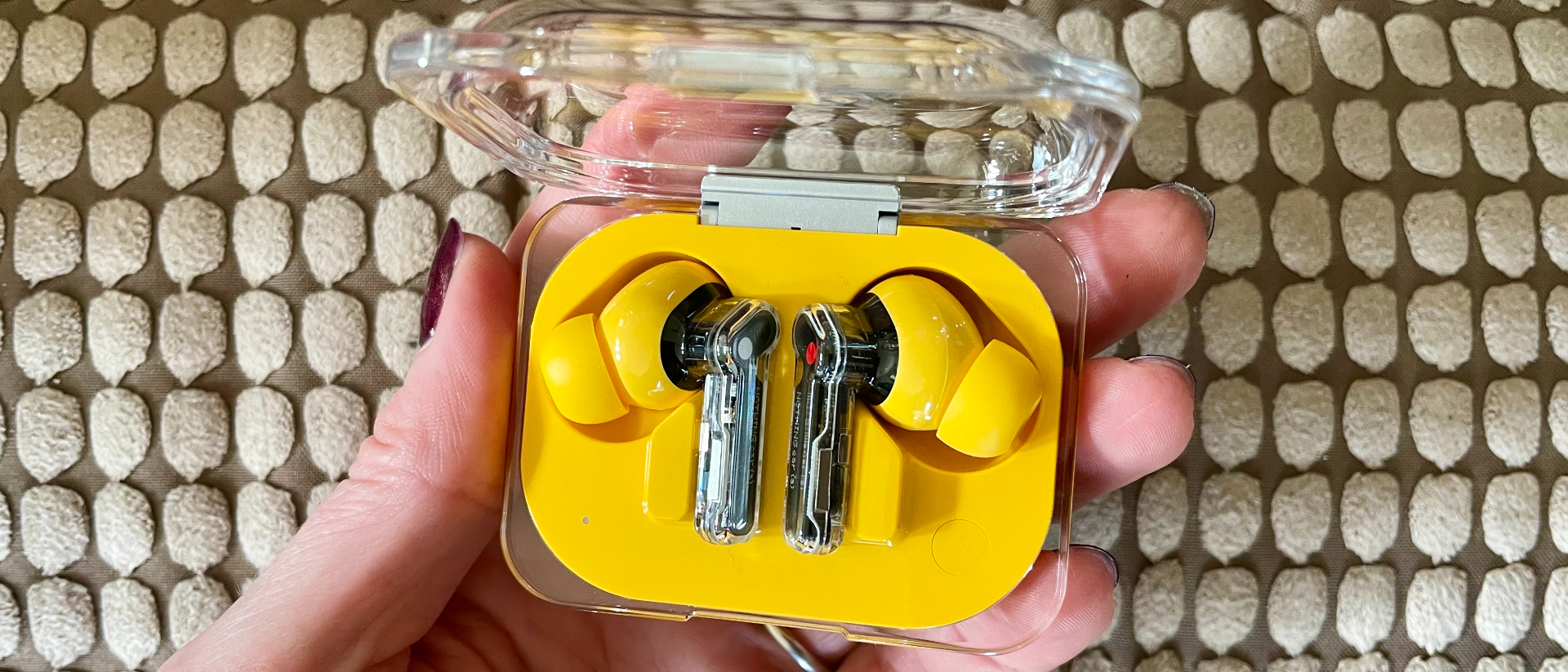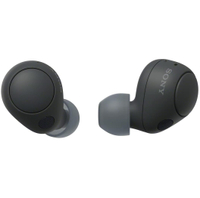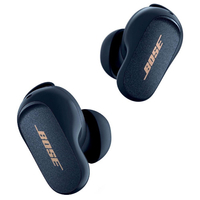TechRadar Verdict
Nothing's top-tier sound profiles are absent in the Ear (a), as is wireless charging and the ceramic driver you get in the company's more expensive Ear proposition (yes, the names are confusing). But that's where virtually all of our criticism ends because, for their humble two-figure price tag, Carl Pei's startup has come into its own and hit a resounding home run here. The feature set, more meaningful noise cancellation, superb sound quality for the level, comfort, and longer battery life in Nothing's joint-fourth stab at true wireless earbuds are spot on. Congratulations Nothing, the Ear (a) are a sure-fire hit.
Pros
- +
Fun, zealous, expansive sound
- +
Vastly improved active noise cancellation
- +
Smaller, more pocketable case
Cons
- -
No wireless charging support
- -
No flagship sound profile curation
Why you can trust TechRadar
Nothing Ear (a): Two-minute review
When it comes to Nothing's earbuds output, it's hard to stop oneself from playing a game of Spot the Difference. That's quite a fun game here, though, since almost all of the differences are vast improvements over anything Nothing has achieved before. All these incremental gains become especially impressive when you consider that this entry-level option from Nothing comes in at $50 / £30 cheaper than the company's last effort.
For the money, these are some of the best noise-cancelling earbuds of the year thus far. Their closest rival? That would be Sony's class-leading WF-C700N. While there's no 360 Reality Audio support in the Ear (a) and a few Sony-specific features are, of course, off the menu, the Nothing earbuds look more premium and feel more foxy. Their noise cancellation is a touch more robust and the sound is every bit as energetic, detailed and zealous, and (dare we say it?) a tad more expansive to boot. Did I mention that the battery life is also impressive, although admittedly it's a lot better without the superb ANC processing deployed?
I have to admit that the Nothing Ear (a) performed far more admirably than I'd anticipated. I enjoyed them more and more as the listening tests cruised by. Gone is the fidget spinner case idea: my review sample might be a fun English mustard-yellow hue, but the Ear (a) is serious about bringing you music – proof that Carl Pei's 2020 startup finally hit its purple patch. The sound is incrementally better than the Nothing Ear (2), and it's backed up by a Nothing X app that's easier to navigate and offers plenty of scope for tweaking things to your liking, including via the newer pinch-control stems.
OK, let's get that moniker out of the way, shall we? I advise you to view Nothing's naming structure with a simple shrug and the raise of an eyebrow, but I'll try to explain it succinctly. Ear (a) is the model you're reading about now, Nothing's 2024 entry-level offering released in conjunction with the more expensive (by $50 / £30) Ear. Nothing tells me that the Ear (a) is effectively the upgrade for the Ear (Stick), while the Ear is the upgrade on the Ear (2). Good intel, but I'd say it does Nothing's newest entry-level earbuds a disservice because the Ear (a) are streets ahead of the Ear (Stick) in every regard.
Both the Ear (a) and Ear were unveiled simultaneously in April 2024. They supersede the inaugural July 2021 Nothing Ear (1), the October 2022 follow-up Nothing Ear (Stick), and the March 2023 Nothing Ear (2). So, aside from a few minor updates (including a Nothing Ear (1) Black Edition, which fared much better than the troublesome originals) the Ear (a) can also be considered the company's joint-fourth Nothing-branded release. That is, if we're not counting the super-cheap CMF by Nothing Buds, which arrived barely a month before the model we're reviewing here. Got it? Well done. (You're doing great, by the way.)
If you take nothing else away from this Nothing Ear (a) review, know that at $99 / £99 (or around AU$192) you'll not be disappointed with these lovely little yellow earbuds.
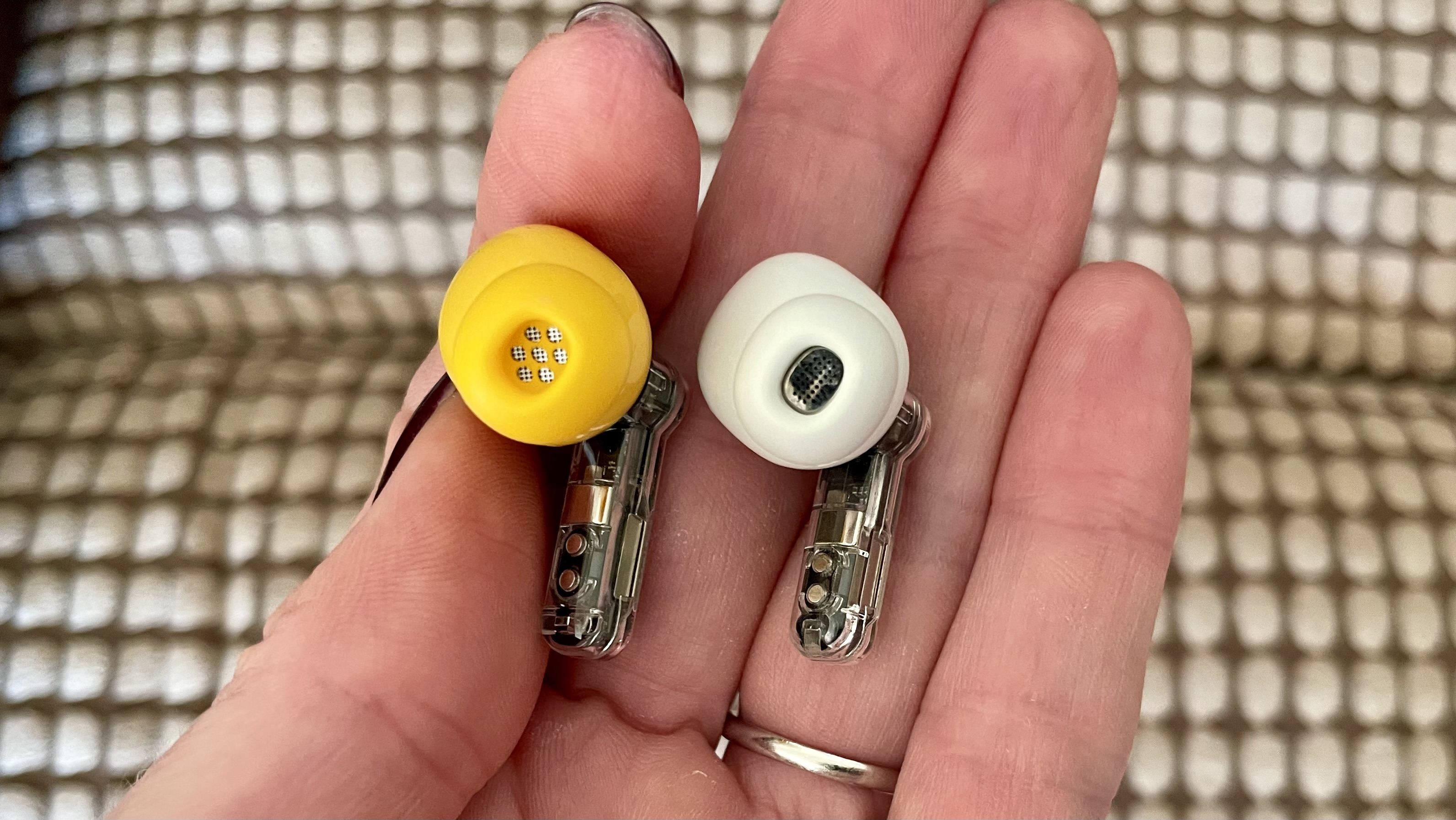
Nothing Ear (a) review: Price & release date
- Released on April 18, 2024 (hitting shelves on April 22, 2024)
- Priced $99 / £99 / around AU$192
If the price above made you think 'Hang on, isn't that less than the older Ear (2)?' well done for paying attention. The Nothing Ear (a) are priced to sell – and sure as eggs is eggs, sell they will.
The Ear (a) earbuds come in three colorways – a warm yellow alongside the more ubiquitous shiny black or white finishes. Why go with yellow? It's a primary color, which Nothing says aligns with its stripped-back, transparent-wherever-possible design language (yes, the stems still feature see-through plastic too).
At this level, the Ear (a)'s closest competition aside from Sony's WF-C700N is perhaps the slightly more expensive Sony LinkBuds S, because remember, the class-leading Technics EAH-AZ80 come in at $299 / £259 / AU$499, and Apple's AirPods Pro 2 retail for $249 / £249 / AU$399.
Of course, that's hardly a fair comparison, since those two options offer premium perks, including triple device connectivity (Technics) and remarkably accurate head-tracked spatial audio from an iOS device (Apple).
That said, Nothing's relatively humble asking price is tempting, particularly when you consider the expressive sound quality and solid noise-nixing they can serve up.
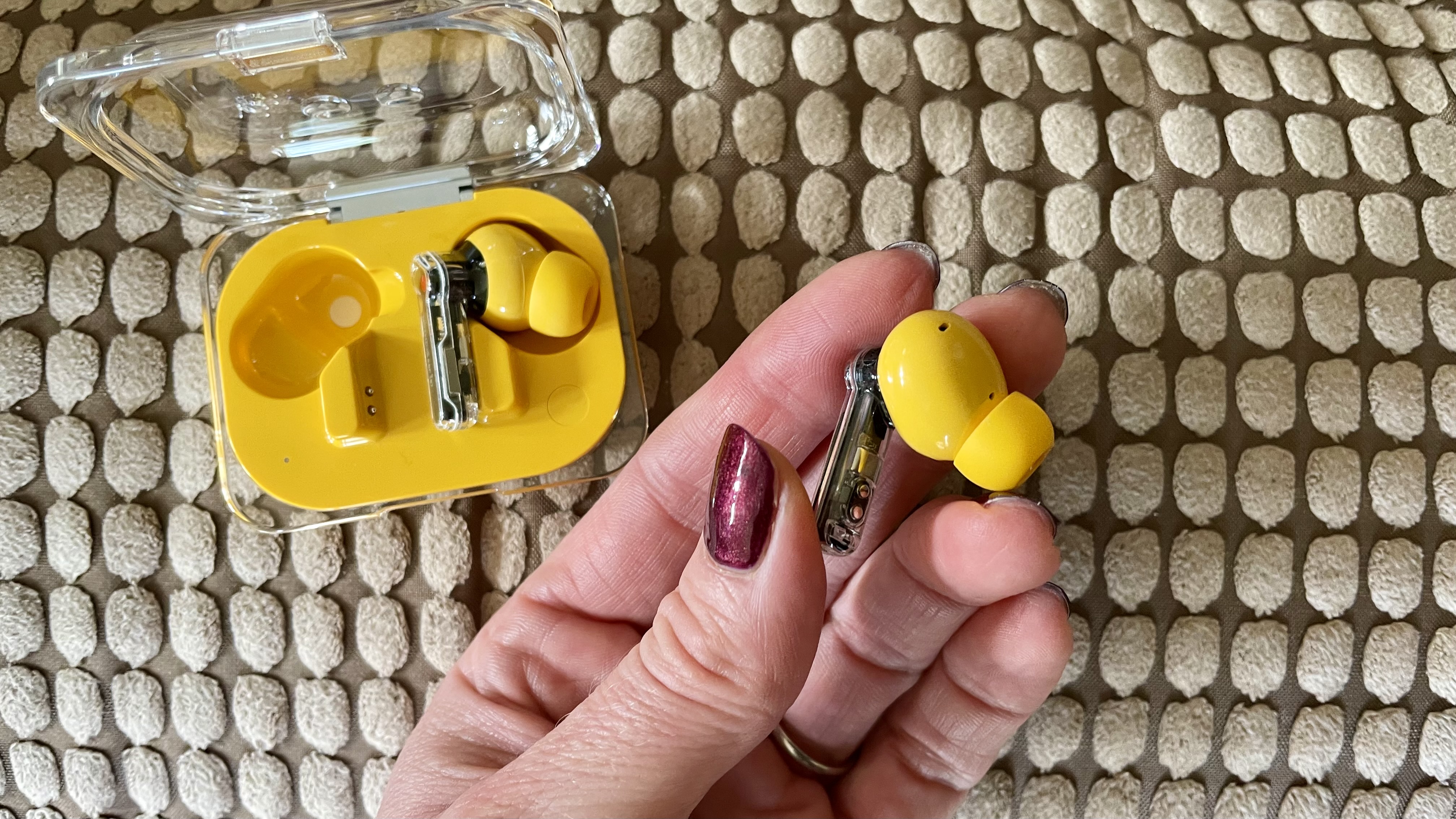
Nothing Ear (a) review: Specs
| Drivers | 11mm custom driver |
| Active noise cancellation | Yes |
| Battery life | Buds: 5.5hrs (9.5hrs without ANC) Total with case: 24.5hrs (42.5hrs without ANC) |
| Weight | 4.8g per earbud |
| Connectivity | Bluetooth 5.3 with LDAC, USB-C |
| Frequency range | Not stated (other than 5000Hz range) |
| Waterproofing | IP54 buds / IPX2 case |
| Other features | 3 mics per earbuds with Clear Voice Tech 3.0, Nothing X App support, Custom EQ, Bass Enhance, Find My Earbuds, Low Lag Mode, Dual Connection, Ear tips fit test |
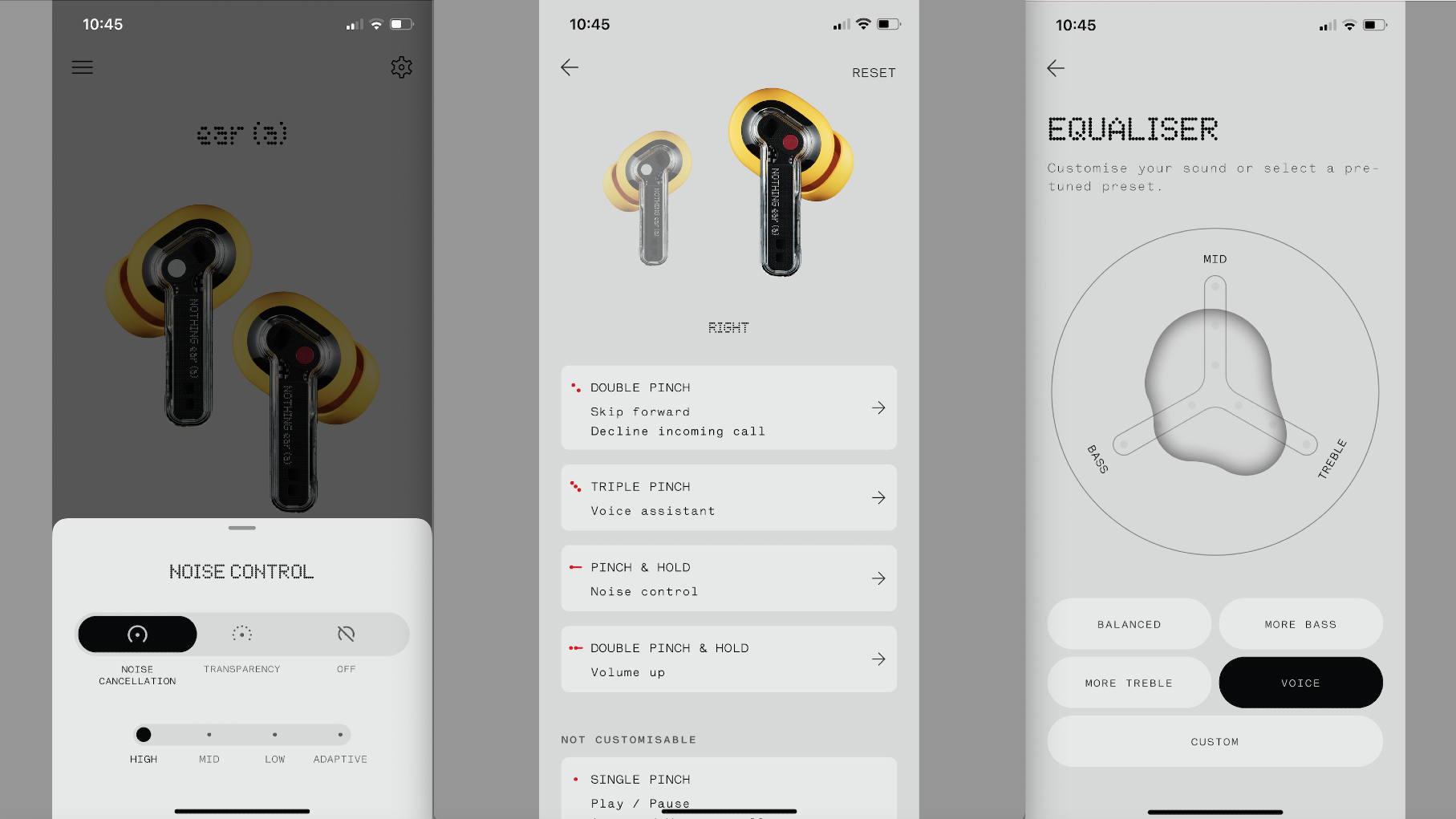
Nothing Ear (a) review: Features
- Bluetooth 5.3 with LDAC support
- Greatly improved ANC
- Pinch-to-speak ChatGPT integration coming, with Nothing Phones
The nominal price of these earbuds is listed above, so I won't keep banging on about it. But if you want listening gear that does the basics – good sound, great noise cancellation, clear calls, easy comfort, a bit of EQ wizardry, and reliable on-ear controls – and does them very well indeed, these are that gear. Also, they're a bit of a conversation starter if you want that, miles away from the black and gray pebble-like options often seen at their level.
Want something better than the basics? Well, Nothing's got an ace up its sleeve here too. Although I was unable to test it in my not-yet-public version of the Nothing X app (rollout will be gradual across Phone (2) followed by Phone (1) and Phone (2a) for the Nothing Ear and Ear (a) in the weeks after April 18, 2024) Nothing tells me it has integrated both Nothing earbuds and Nothing OS with ChatGPT, to offer users instant access to the chatbot directly from its devices. What this means is that users with the latest Nothing OS and ChatGPT installed on their Nothing phones should soon be able to pinch-to-speak to the popular consumer AI tool, directly from these entry level Ear (a) earbuds. However comfortable you feel with AI, it certainly adds value at the level.
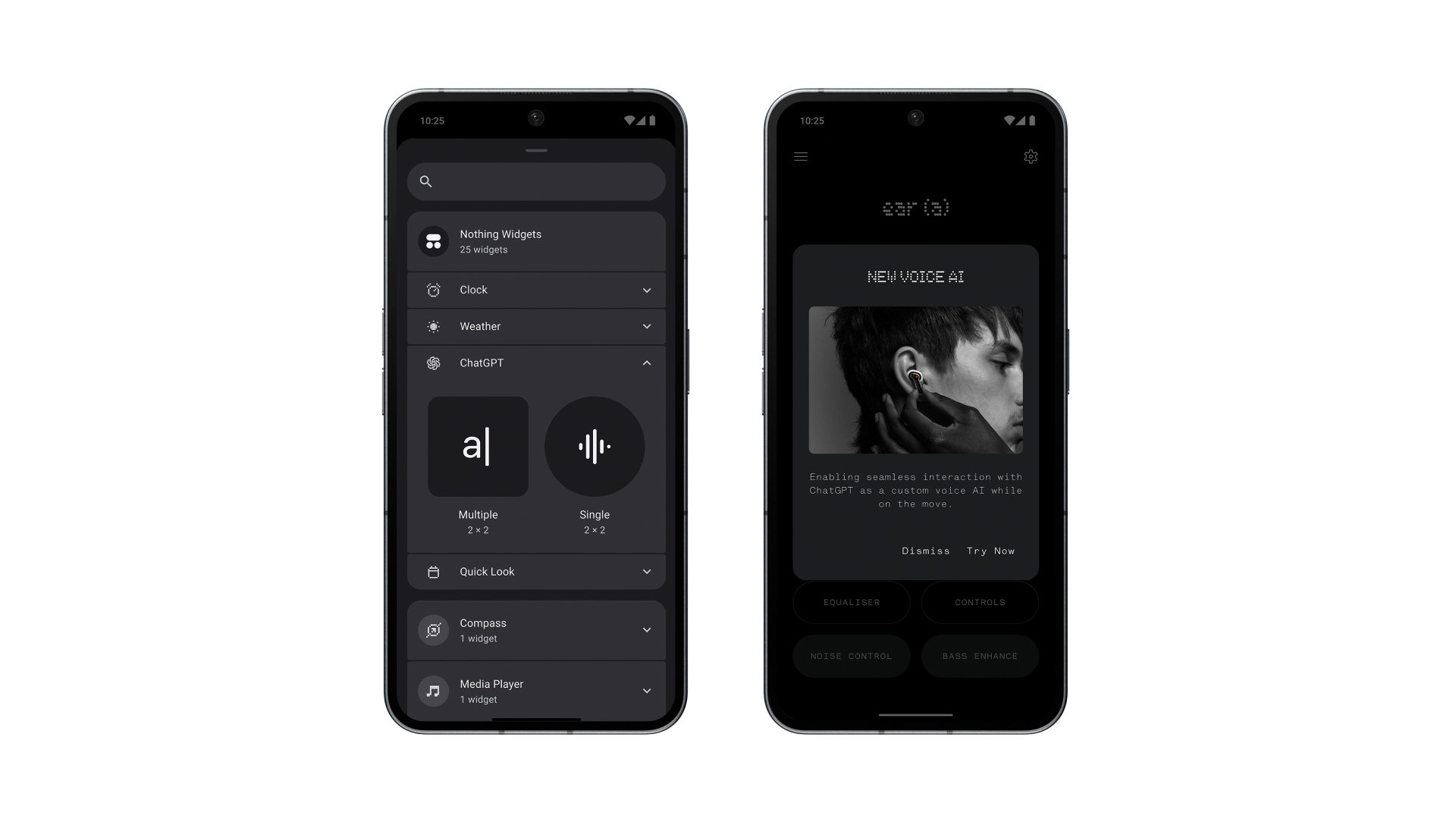
Back to the Ear (a) specifically and call handling is far better this time around, with recipients telling me my voice was unusually clear, which checks out when you see that the Clear Voice Technology has been upped from v2.0 in the Ear (2) – or 1.0 with Bass Lock software in the Ear (Stick) – to 3.0 here.
You're getting Bluetooth v5.3 and LDAC support for hi-res audio (the Sony-developed codec that lets you stream high-resolution audio up to 32-bit/96kHz over Bluetooth at up to 990kbps, if your device supports it and the file is up to scratch), which is a valuable inclusion at this level.
There's no onboard spatial audio wizardry and you don't get the Ear (2)'s splendid personalized hearing tests. However, you do get in-ear detection (to pause music when they're out and resume it when they're in), a low lag toggle for gaming, issue-free multipoint to two devices, an ear tip fit test and a Find My Earbuds feature, which issues a rattlesnake-style sound from whichever bud you're trying to locate.
Now, the noise cancellation. After deploying ANC (rather than 'Transparency' or 'Off'), you can select from High, Mid, Low, and Adaptive profiles. High is very good: the hairdryer we use in our meticulous and methodical testing was largely nixed. I can see why it drops the battery life from 9.5 hours without ANC to 5.5 with it, but when the near bubble-of-silence outcome is this good, it's a hit I'm willing to take. The quoted improvement is 45dB over 40dB of ambient noise nixing and if that's hard to quantify, let me tell you that when I sat down to do some work at home wearing Ear (a) with ANC on High, I didn't realize the oven extractor fan was on (my other half was making breakfast), but as soon as I switched to Ear (2) it became perceptible.
Heading over to the Transparency option, this is signified by a woman exhaling, which is fun. Although there's no slider to tweak the level of ambient sound you're letting in, it's perfectly acceptable and means voices can be heard without removing the Ear (a).
The Nothing X app takes the reins and it too is much improved, never faltering and always serving me what I need, without going round the houses to get there. The EQ tab is essentially a three-band offering presented in what I like to call a splodge, rather than sliders for each – think Nura True Pro's visual depictions rather than a mixing desk, with four presets for more bass, more treble, voice focus or a balanced sound – but of course, you can create your own. It's not the most fully-featured offering Nothing has in its arsenal (for that you'd have to opt for the Nothing Ear) but it certainly works.
Anything missing where it should be? Nothing. No sir.
- Features score: 5/5
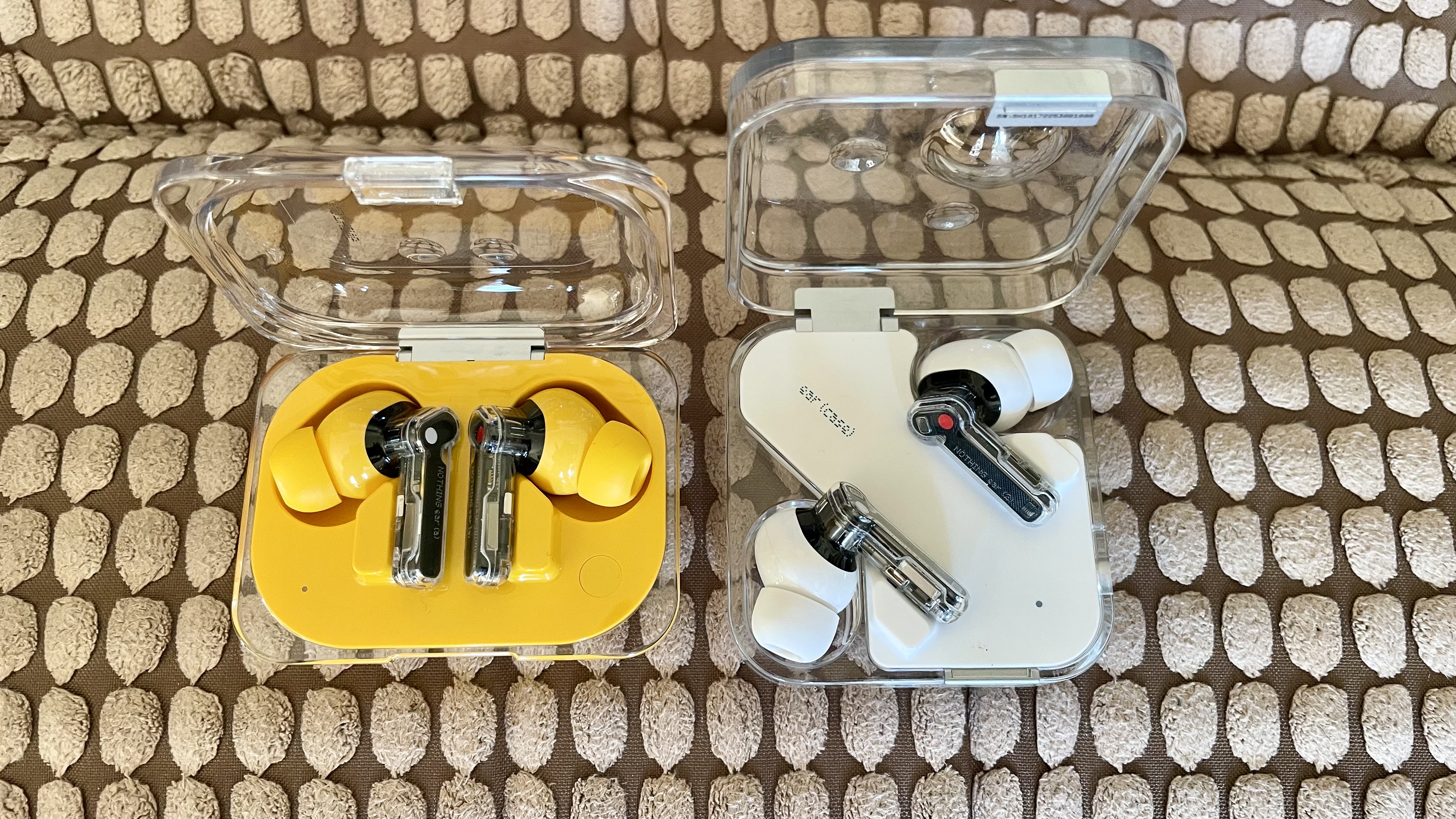
Nothing Ear (a) review: Sound quality
- LDAC handled very well indeed
- Fun and zealous sound
- Unusually expansive for this type of in-ear
If you've read the star rating at the top of this review and come this far (thank you for sticking with me), it will come as no surprise to learn that the Ear (a) doesn't lack in the sonic department.
Those with a Sony smartphone (I used the Sony Xperia 1 IV) will find LDAC codec files are delivered with expanse and pinpoint accuracy when it comes to the placement of each sonic article. In Aerosmith's Going Down / Love In an Elevator, a shaker sits comfortably in the well of my right ear as backing vocals come in through the left. When the heavily processed "Going down" vocal bridge sweeps across the soundstage like a freight train, it grazes the back of my brain en route.
Even when I stream lossy Spotify tracks (or much better Apple Music songs) the Nothing Ear (a) buds handle them admirably, with ample texture and space around Elton John's Rocket Man vocal, in a cohesive mix that brings forward the synths and bass plucks other earbuds at this price can't reach.
For dynamic build and nuance, the Nothing Ear (a) are best described as meaty and arresting. It's not that they lack refinement exactly, just that they prioritize fun and energy over that integrated hi-fi listen some might prefer. For me, there's so much here to celebrate sonically that I cannot pick fault. No, they're not better than something at nearly three times the price (such as the Technics EAH-AZ80, for example), but for the money, Nothing has tweaked its recipe to near perfection here.
Want to see what I mean? Play the intro of The Who's Substitute. Tell me those guitar strings and shaker aren't every bit as jangly and expressive as you could ever wish for at $99…
- Sound quality score: 5/5
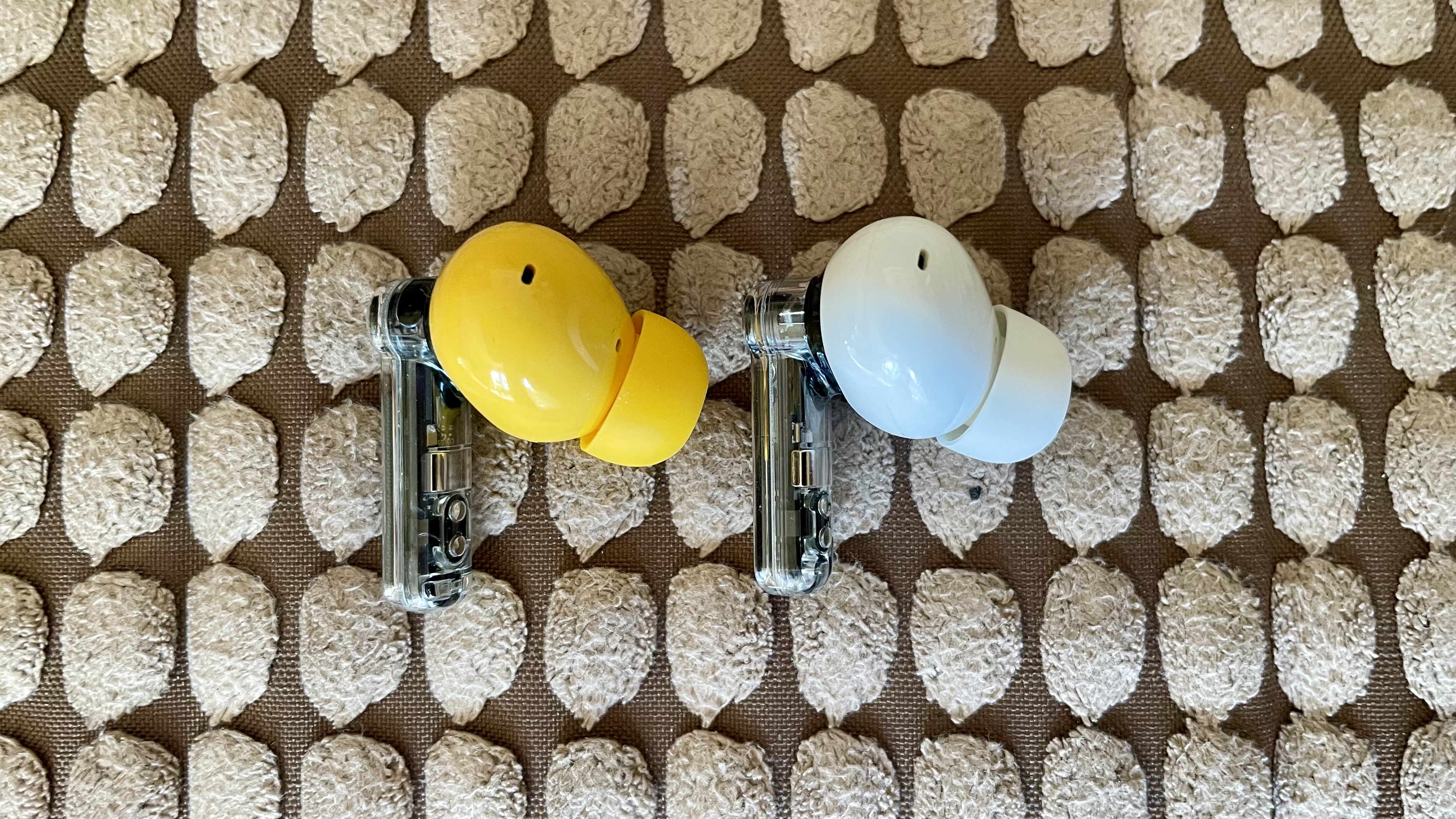
Nothing Ear (a) review: Design
- Smaller and more pocketable case
- Pinch stems work really well, even when wearing gloves
- Nothing's design language is beautifully realized
Holding the Nothing Ear (a) earpiece next to the Nothing Ear (2) is a fresh surprise. Nothing has tried hard to keep its popular design language constant, but these two earpieces are actually very different beasts. I've placed the Ear (2) next to the new Ear (a) in the images below to prove that the earpiece is just slightly bigger across the board – 1.5mm taller, 0.2mm wider, and 0.8mm deeper, to be exact. The Ear (a) earbud is also 0.3g heavier than the Ear (2), although the case is 12.3g lighter and quite a bit shallower.
I mention these facts and figures only to highlight that it is emphatically not a case of 'same buds, different box' from Nothing. They're different. They're better. Perhaps the only potentially disappointing stat here is the size of the driver, which is now 11mm – down from 11.6mm in the Ear (2) and 12.6mm in the Ear (Stick) – and the 11mm driver in the flagship Ear is ceramic, while this one isn't. Not so fast, though, as Nothing tells me that through tweaks to the dual chamber design under the hood, which now includes two extra vents for improved airflow, it's extracted 10%-15% more from Ear (a)'s driver. However Nothing has achieved it, I certainly agree that the sound from said driver is greatly improved.
After switching out to the smaller ear tips (you get three in total), I find the Ear (a) a breeze to wear – although if you've particularly small ears you may need to try before you buy, and my guide to the best earbuds for small ears is worth consulting.
The new case makes a lot of sense. It flips open as easily as it slips into and out of my pocket, and the earbuds are some of the easiest to retrieve I've ever tested – Nothing's right-red, left-white dots also help you match the colors for charging. You don't get wireless charging support at this price, but the IPX2 rating of this charging nest (for mild water resistance) is more than you get with plenty of pricier options. The earbuds themselves boast an IP55 rating, which is the same as Nothing's new Ear earbuds, although the Ear's case has an IP55 rating – so it's essentially dust- and water-resistant.
Nothing's pinch stems also work really well. You can customize what the morse code short- and long-press combinations do for each stem – yes, including volume. These stem-squeeze controls also work with gloves on, unlike many touch-capacitive solutions.
- Design score: 5/5
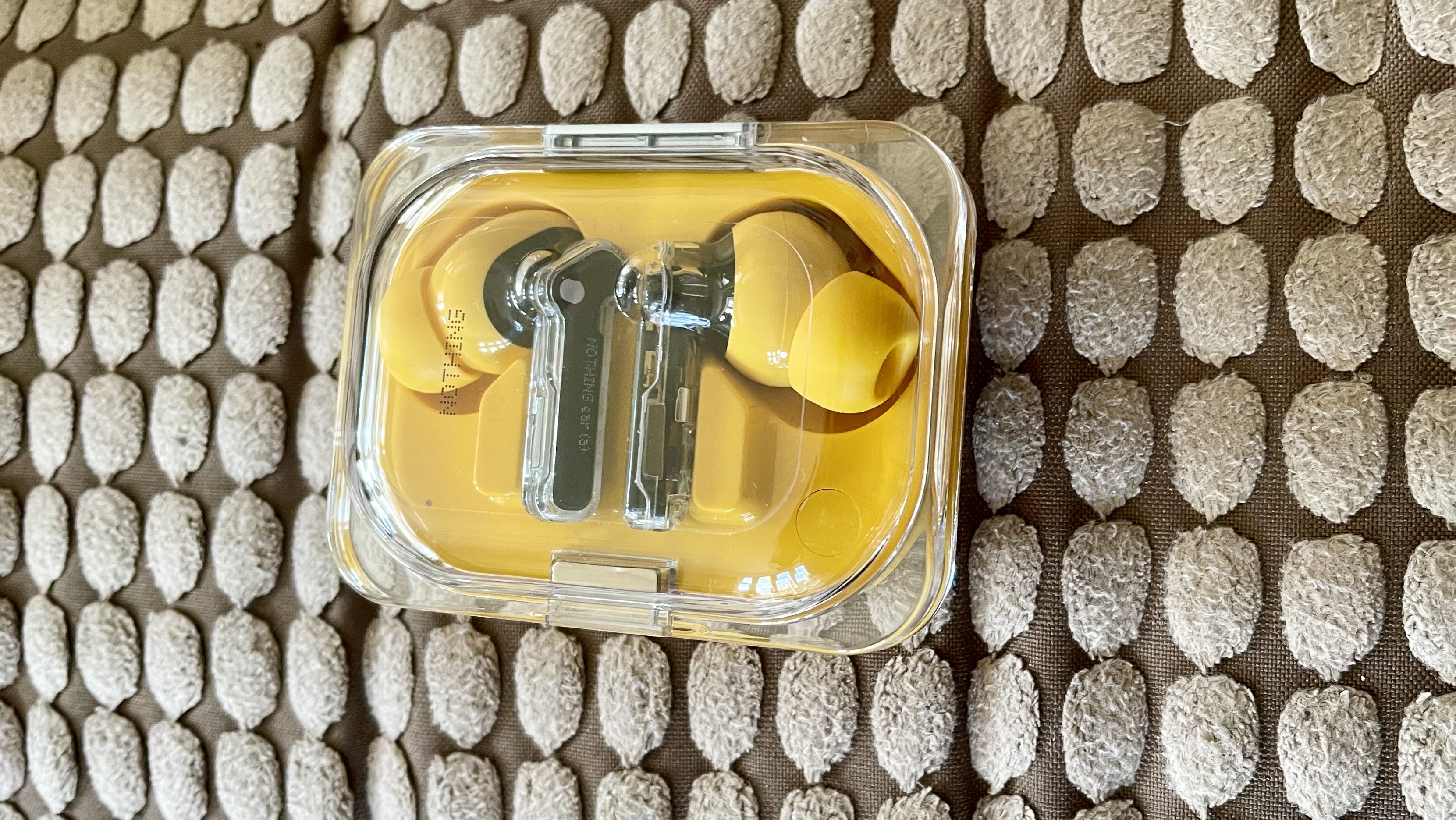
Nothing Ear (a) review: Value
- As good-looking as any earbuds can be for this money
- Winning ANC at the level
- LDAC for extra sound-per-pound value
I've sprinkled this liberally throughout the review, but I'll say it again, design-wise there's nothing better at the level. But don't be mistaken, these aren't style over substance: the sound quality is very good, and for noise-cancellation specifically, they're extremely hard to beat for the money.
As always, it's important to state that if you're prepared to spend $299 / £279 / AU$429 (aka three times the money) there's better noise-cancellation available in the Bose QuietComfort Earbuds 2, but that's hardly fair.
Prior to testing the Nothing Ear (a), for this price point, I would nudge you towards the Sony WF-C700N, but in my honest opinion, these entry-level Nothings give those a solid run for their money, across the board. And for premium looks for budget money, there's really no contest…
- Value score: 5/5
Should I buy the Nothing Ear (a)?
| Section | Notes | Score |
|---|---|---|
| Features | Nothing omitted, nothing left out | 5/5 |
| Sound quality | As meaty, fun, zealous and accurate as this money buys | 5/5 |
| Design | Comfortable, useful and fun | 5/5 |
| Value | Solid sound-per-pound value here | 5/5 |
Buy them if...
You prioritize budget ANC
These earbuds offer some of the best inexpensive ANC profiles I've tried.
You have a Sony phone
Four words: LDAC support for $99.
You want some natty earbuds
Rarely have I had so many people strike up a conversation with me while I'm wearing earbuds, to tell me that they like my earbuds.
Don't buy them if...
You want spatial audio wizardry
No dice here. You need to look to the Sony WF-C700N (Sony 360 Reality Audio), LG Tone Free T90Q (head-tracked using Dolby Atmos), or Bose QuietComfort Ultra Earbuds (a premium proprietary offering combining adaptive sound profiles with head-tracking) – but be warned, most of those require a surcharge.
Your ears are on the very, very small side
This design works for my smaller ears using the smaller ear tips, but if your concha (aka ear-well) is particularly bijou, you may struggle…
Nothing Ear (a) review: Also consider
| Nothing Ear (a) | Sony WF-C700N | Bose QuietComfort Earbuds 2 | |
|---|---|---|---|
| Price | $99 / £99 / Approx. AU$192 | $119 / £99 / AU$199 | $299 / £279 / AU$429 |
| Drivers | 11m custom | 5mm dynamic | 9.3mm dynamic |
| Active noise cancellation | Yes | Yes | Yes |
| Quoted battery life | Buds: 5.5 hrs (9.5 hours without ANC Total with case: 24.5 hrs (42.5 hrs without ANC) | 7.5hrs (ANC on) 10hrs (ANC off) plus one full charge in case | 6 hours (buds); 3 extra (charging case) |
| Weight | 4.8g | 4.2g per earpiece | 6.2g |
| Connectivity | Bluetooth 5.3, LDAC, USB-C (no wireless charging) | Bluetooth 5.2, USB-C (SBC, AAC) | Bluetooth 5.3, USB-C (SBC, AAC) |
| Frequency range | 5000Hz range | 20Hz - 20kHz | Not stated |
| Waterproofing | Yes, IP54 earbuds; IPX2 case | Yes, IPX4 | IPX4 |
| Other features | Row 8 - Cell 1 | Sony 360 Reality Audio | N/A |
Sony WF-C700N
If you want Sony's 360 reality Audio as well as its LDAC hi-res codec, this money buys you that. The build is a little plastic and doesn't feel as premium as the Nothing Ear (a)'s design, but priorities are priorities. Read more on this in our full Sony WF-C700N review
Bose QuietComfort Earbuds 2
You'll have to part with quite a bit more money to get it, but the Nothing's ANC is beaten here. Hardly fair? Correct – we're essentially highlighting that to get noticeably better noise cancellation, you'll have to scale that food chain… Learn more in our in-depth Bose QuietComfort Earbuds 2 review
How I tested the Nothing Ear (a)
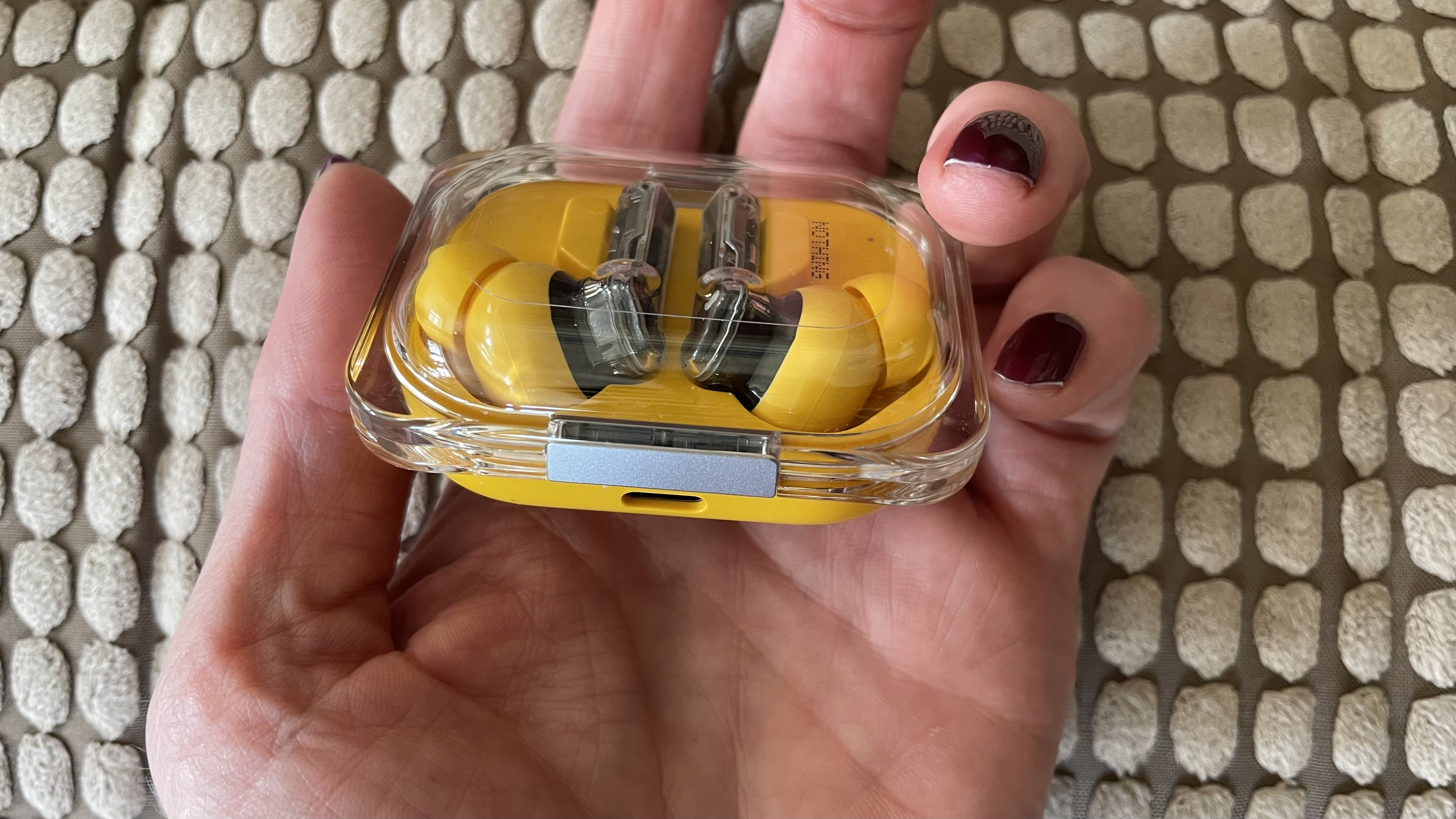
- Tested for two weeks, listened against the Sony WF-C700N, Bose QuietComfort Earbuds 2 and Technics EAH-AZ80
- Listened at work (in the office, walking through Dorset, on a train) and at home
- Listened to Tidal Masters, Apple Music Lossless tracks and Spotify on an iPhone 12 Pro, MacBook Pro and Sony Xperia 1 IV
The Nothing Ear (a) became my primary musical companions for five days – after a thorough 48-hour run-in period.
They accompanied me to work (walking brusquely to a train into our Paddington office or on the London Underground to various events) and on a flight to Copenhagen (I know, get me).
To better test the comfort levels (and battery life claims), I followed TechRadar's meticulous methodology testing.
To check the audio quality across the frequencies, I listened to TechRadar's reference playlist (spanning everything from pop to classical) on Apple Music and Tidal, and also my own musical selections and podcasts. I also wore them to watch YouTube tutorials (mostly about silversmithing: finessing bezel settings and working with art clay silver, since you ask) from my MacBook Pro.
I’ve been testing audio products for well over five years. As a dancer, aerialist and musical theater performer in another life, sound quality, fit, and user experience have always taken priority for me personally, but having heard how wonderful ANC can be when done well, I know what I'm listening to here also.
Read more about how we test earbuds at TechRadar
- First reviewed: April 2024

Becky became Audio Editor at TechRadar in 2024, but joined the team in 2022 as Senior Staff Writer, focusing on all things hi-fi. Before this, she spent three years at What Hi-Fi? testing and reviewing everything from wallet-friendly wireless earbuds to huge high-end sound systems. Prior to gaining her MA in Journalism in 2018, Becky freelanced as an arts critic alongside a 22-year career as a professional dancer and aerialist – any love of dance starts with a love of music. Becky has previously contributed to Stuff, FourFourTwo and The Stage. When not writing, she can still be found throwing shapes in a dance studio, these days with varying degrees of success.
